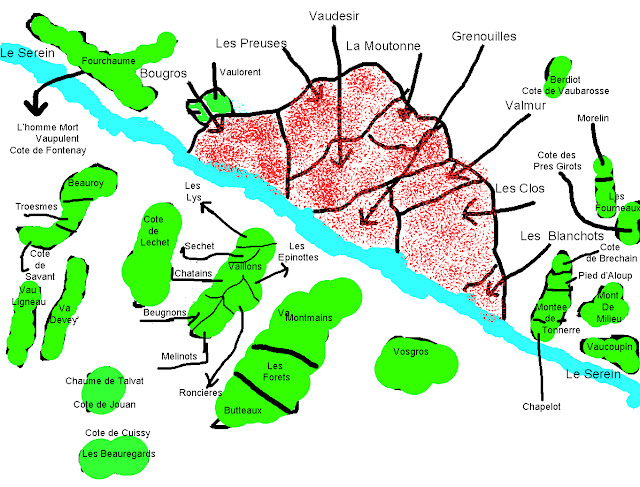A degustation of Italian Natural Wines
Cantina Giardino 2108 White
A winery that since 2003 produces wines with a very "natural" approach. They use grapes from historic vineyards site, in the heart of Irpinia, the cradle of Aglianico, Fiano, and Greco. Antonio Di Gruttola the owner, begins to make wine (experimenting) without the modern conventional winemaking; the idea is to make wine by spontaneous fermentation, without filtration, clarification and without the aid of sulfites.
Years of tests and research have confirmed that this could be the right way.
Antonio prefers all his grapes to macerate for sometimes which in some cases lasts at least six months, like the Cuvee (Sophia).
One of the company's choices is to vinify in 1000 liter stoneware amphorae to produce fresher wines, macerated for a few days and aged for 10/12 months in the same amphorae. Bottled only in magnums which for Irpinia represents the bottle that was put at the table at home.
The oxygenation in the stoneware is lower than the wood and definitely lower than the terracotta, the cooking of these takes place at 1300 degrees and for this the transpiration is minimal.
The white for 2018 is 100% Coda di Volpe it does have lots of energy with very sharp acidity, stone fruit apricot and jammy peach. Stony dry minerality with spice element saffron and Curcuma. The palate is very refreshing with a great savoriness.
Monastero
Trappiste di Vitorchiano
Seventy women, of all ages, coming from the most diverse experiences, entered the Monastery moved by the desire that vivifies the heart of every man: to know the Mystery of God and experience His Love. In a life shaped by faith, by the liturgy, and by manual labor.
Everything is supported by agricultural work, they produce jams and vegetables, vineyards and orchards.
The place is located in the region of Lazio, in the province of Viterbo. A quiet place with a relaxing landscape and environment.
The area is characterized by soil rich in the magmatic rock known as 'peperino'. The gardens and vineyards were created by the nuns after years of hard work, planting and design the land to be in synchrony with them and nature.
In the Trappist Monastery of Vitorchiano, the production of wine is very artisanal and derives exclusively from the cultivation of the vineyards with ancient and virtuous methods, without the use of synthetic, and chemistry, none of their treatments are invasive. The works both in the vineyard and in the cellar are inspired by Pope Francis' and the advice of the famous winemaker Giampiero Bea, president of the Consorzio Vini Veri and owner of the Montefalco Paolo Bea cellar.
Coenobium Bianco 2018 is produced from Trebbiano (45%), Malvasia (35%), Verdicchio (20%) grapes, bright lemony color, with yeast notes, I guess some dead lees working has been done during the winemaking. Notes of banana and fresh-cut grass, ginger and saffron. Fresh clean and with a spicy touch on the palate support a nice salinity perception.
Ezio Cerruti
Ezio, is a true lover of his vines. The Vineyards are located about 400 meters above sea level, without the use of herbicides and systemic products, in favor of copper and sulfur, very low concentrations of sulfur dioxide. Since 2001 he began to make wine, his favorite grape variety is Moscato. Ezio defines himself as a "farmer" not a wine producer.
The economy of the winery, in fact, is based largely on the sale of grapes; this allows great freedom in the vineyard and allows him to use only the best part for the wines. The Cantina is located in the town Castiglione Tinella in the province of Cuneo. The soil is mostly composed of clay and marl. Ezio's idea is mainly based on non-intervention, therefore few decanting are made, little sulfur is used and clarifications are made by decanting. Production is limited to a few thousand bottles.
The "Fol" 2018 is the dry and firm version of Ezio Cerruti's Moscato Bianco. It is a white wine with an immediate and direct profile, which is striking for its freshness and for that pleasant aromatic note typical of the varietal. Even the nose is pleasantly aromatic, notes of citrus, white fruit, flowers, and earth, a light sweet honey sensation make its way. Fol means "crazy" in the Piedmontese dialect.
Vigneto Saetti
Lambrusco it has different places, with different clones so they always taste different to each other, and traditionally are stylistically different... Below the denomination spread around the Emilia region:
Lambrusco di Sorbara.
Lambrusco Grasparossa.
Lambrusco Salamino.
Lambrusco di Modena.
Lambrusco Marani.
Lambrusco Maestri.
Lambrusco Montericco.
Lambrusco Ancellotta.
The original plant of the Saetti vineyards dates back to 1964, over the years the cultivation systems have been selected and improved, above all efforts have always been made not to alter the natural balance of the vineyard. To date, in fact, during the manual harvest of the grapes, a careful selection is made to obtain a terroir-driven wine. Bottle fermented without dosage
Cadetto Rosato 2018
does have a pink-red skin onion color, slightly fizz more in Pet-Nat for the Loire valley than a Lambrusco style. Rose petal, cherry, and sour raspberry, dusty, stony minerality. Palate fresh, mineral with earthy notes.
raffaelemastrovincenzo.blogspot.com.au
--------------------------------------
wine / spirit / lambic / drinker
https://www.instagram.com/pitbeat/















Comments
Post a Comment